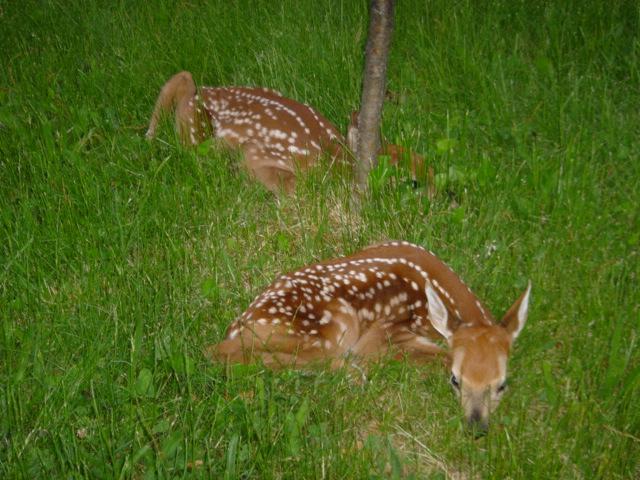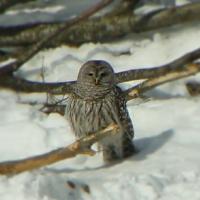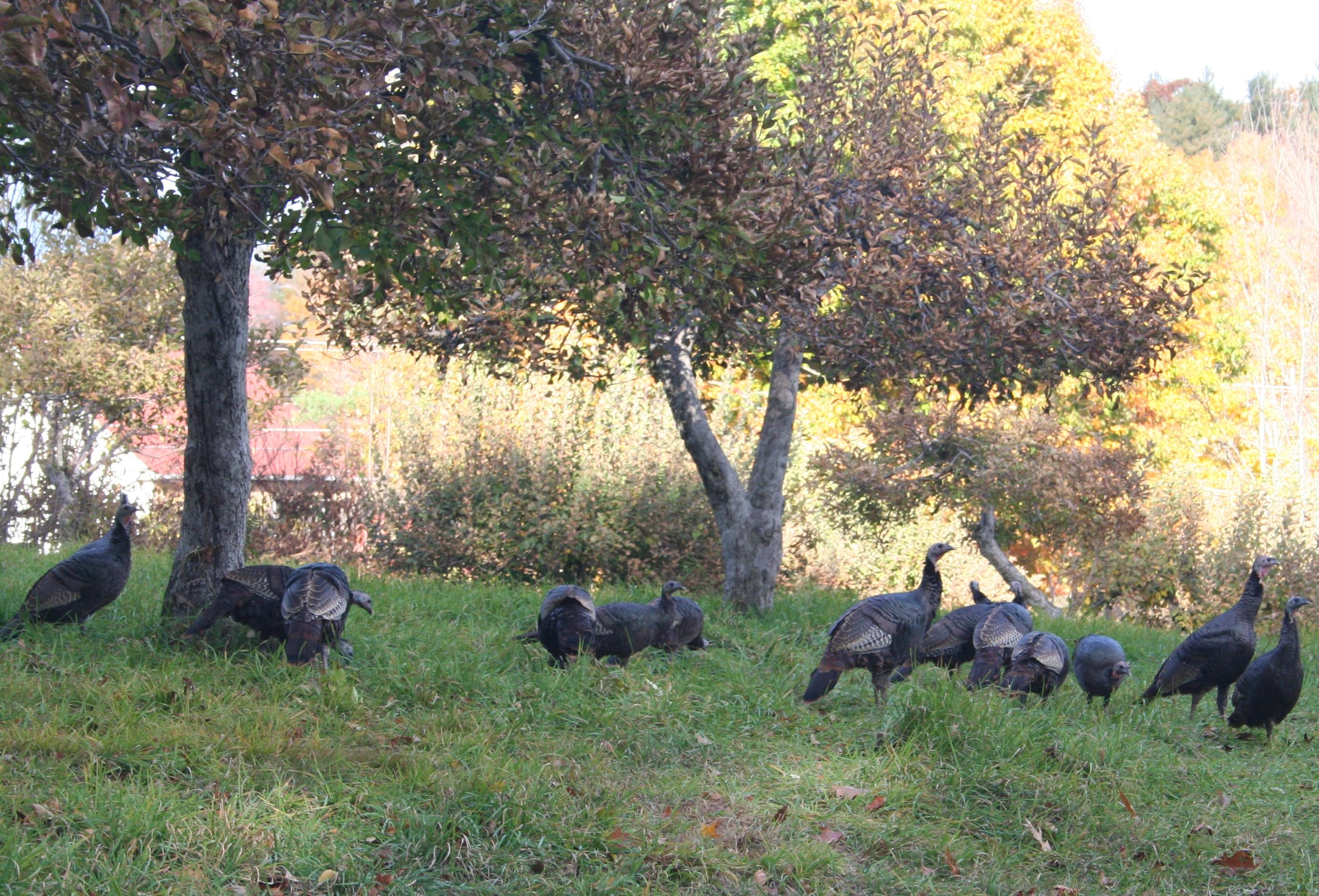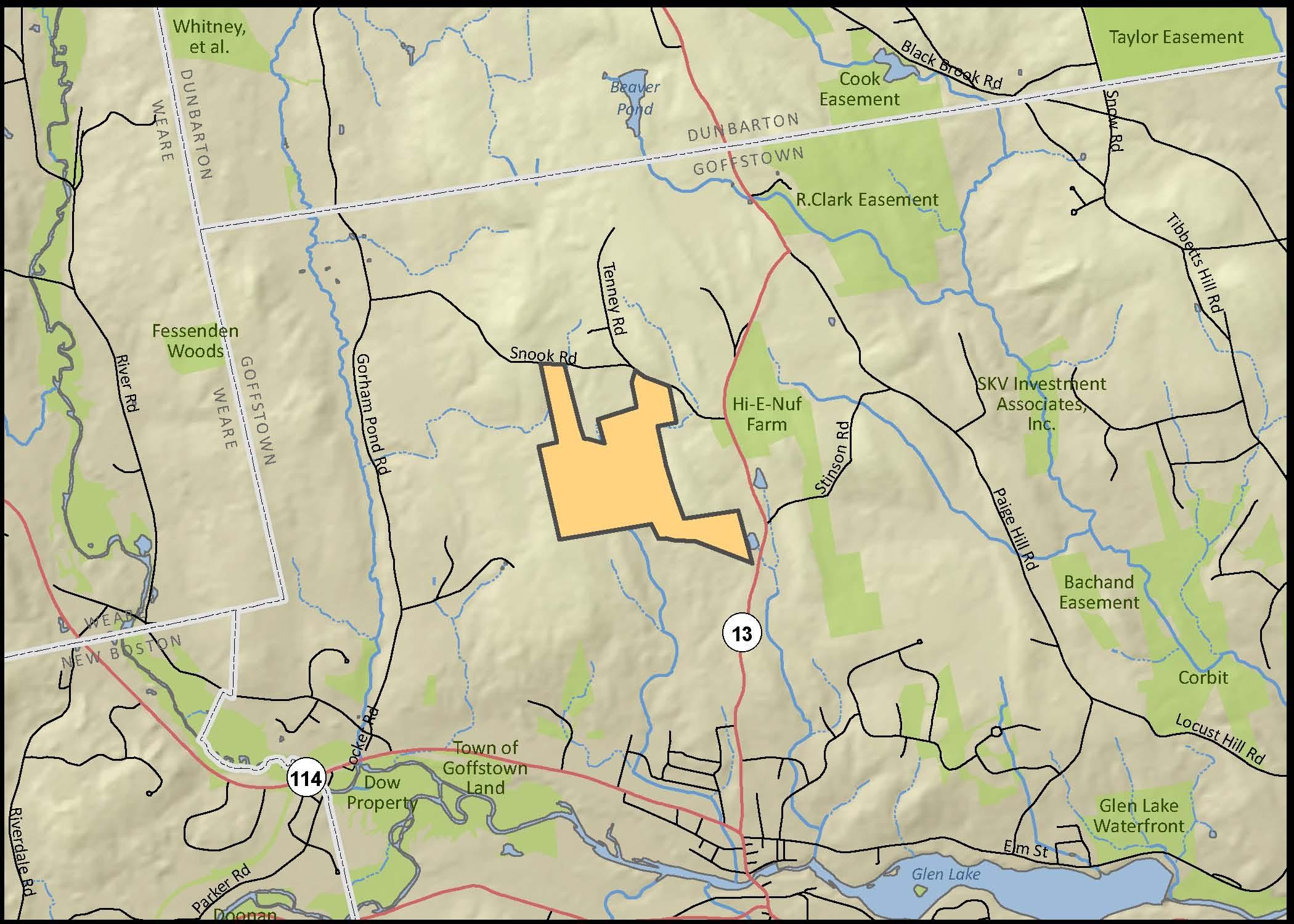Family of Wildlife Enthusiasts Conserves Goffstown Farmland
- Tags:
- Land Conservation

Fawns hide in one of the fields of the Sugar Bush Farm in Goffstown. Photo courtesy of the Shost family.
From her chair by the large window overlooking a field that slopes down to a farm pond and apple trees, Gayle Shost watches wildlife every day. At the very least, she’ll see the birds mob the feeders, and at the most she’ll see fawn triplets frolic in the grass, turkeys hurl themselves up into the tallest trees to roost, a fox skitter through or a hawk swoop past on the hunt.
“It’s so pleasant to sit here and watch the animals… I feel I’m right out in it,” Gayle said during a recent visit at her home.
So when she and her son Duston Shost, who also lives on the family farm in Goffstown, were asked by a friend and apple customer who is on the Goffstown Conservation Commission to consider conserving the land, they saw an opportunity to make sure the wildlife would never be displaced.

In a collaborative effort of the Shost family, the town and the Forest Society, the Forest Society acquired the conservation easement on 177 acres of the Shost’s farm, Sugar Bush Farm, in September.
The easement protects stellar wildlife habitat. A short truck ride beyond Gayle Shost’s window view lies an extensive wetlands, the heart of which is a large beaver pond that supports a great blue heron rookery and wetlands animals like turtles, amphibians and birds. The forests and fields that make up the rest of the property offer important edge habitats and the variety of cover and foods that attract an even more diverse mix of species.
Jean Walker, the chair of the Goffstown Conservation Commission and the friend who suggested an easement to the Shosts, said the area around Sugar Bush Farm is a priority for the town because of its habitat diversity, the development of other old farms in town and the proximity to other conserved land.
“This is a very important piece and we are very excited about this project,” she said. “It’s close to two other conserved properties, so this puts a big area under protection.”
The state Dept. of Environmental Services recognized the importance of the property’s wetlands by supporting the conservation project with an Aquatic Resources Mitigation grant. The rest of the funding was provided by the town’s conservation fund, the Samuel P. Hunt Foundation, the Forest Society and private contributions.
Honoring the family heritage
The Shost farm has been in Gayle Shost’s family—the Whipple family -- for five generations. The farmhouse was built in 1807. Gayle and her sister grew up on the farm, and she remembers her father and grandfather making deliveries of eggs and apples to Manchester and the surrounding towns. Her grandfather made those deliveries by horse and wagon. At one time, the farm boasted 7,000 chickens, in addition to apple orchards, a maple sugar operation and hay fields.

“We used to camp along the shore and watch the beavers and listen to the heron chicks squawking,” Duston Shost said.
Gayle and her late husband Stephan raised their children on the farm, after Stephan completed his military service and they settled down in Goffstown. The Shosts continued the farming tradition but times were changing and outside jobs were necessary as well. Stephan worked the farm when he wasn’t working at the Rockinham Park racetrack, where he worked until he was 90.
“My father would have liked the easement very much. He loved animals, too,” Duston said.
Today Duston also works both off and on the farm, still growing and selling apples and mowing the fields to keep the forest from overtaking them and to provide hay for friends’ horses. His sister Stephanie (Shost) Yost helps out as well. The farming lifestyle is very much alive, especially when Duston drives to what seems like the top of the world on summer evenings, to the upper fields to mow and prune apple trees, or when Gayle puts up quarts and quarts of peaches from the farm’s peach trees.
Considering the hard work of all the family members over five generations who have cared for the land and have been sustained by it, the Shosts had another reason to conserve the land.
“It’s in memory of those who went before us,” Gayle said. “They cleared the woods, built the stone walls, planted the apple trees and made sacrifices to keep the farm going.”
The past and present generations of farmers who kept so much of the land intact are directly responsible for the farm’s attractiveness to wildlife today. Conserving the land is the ultimate way to keep that sustaining tradition in place for the future.

